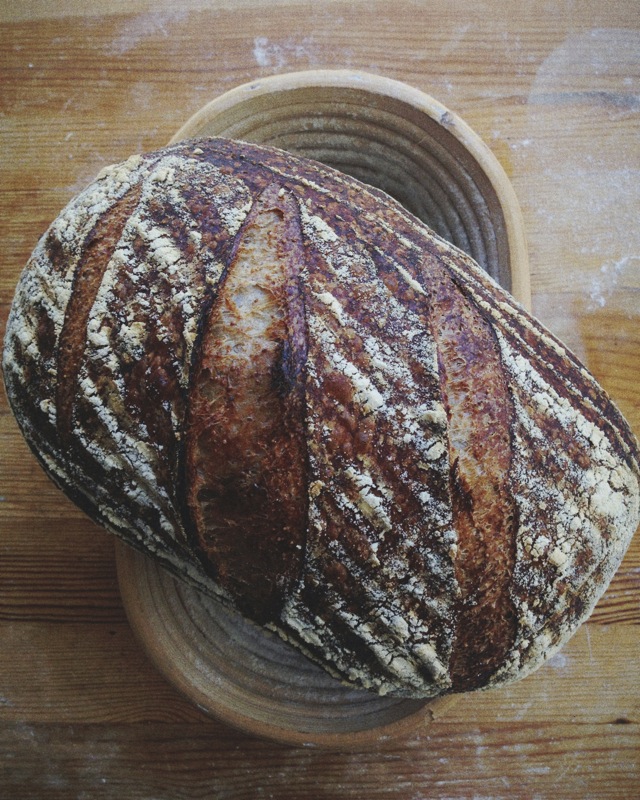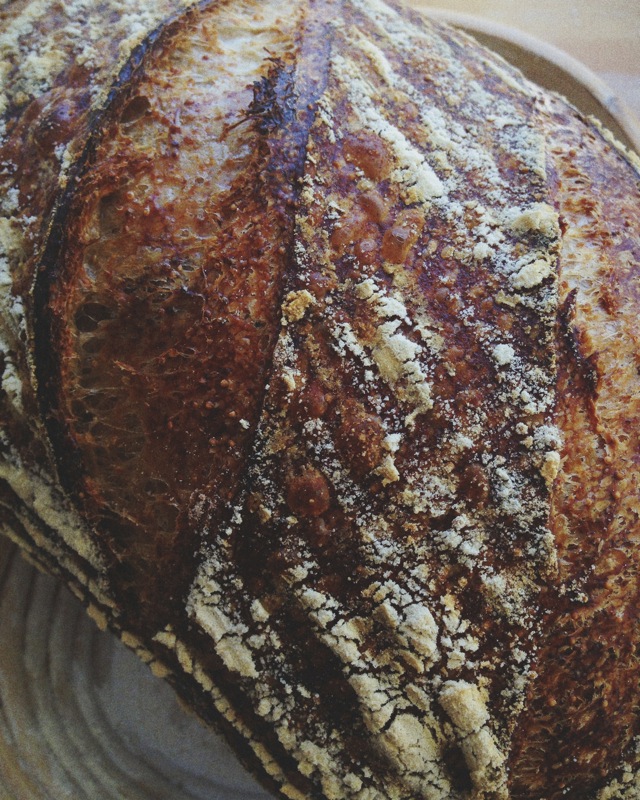Sprouted Amaranth Bread - Tartine Book 3
It's been awhile since I've played with any sprouts so this week I decided to try one of the sprouted breads from Tartine Book No. 3
I've used toasted amaranth in breads before (see: this post. ) and very much liked the flavor. It brought a delicious nuttiness to the bread. Sprouting the amaranth led to a completely different flavor that had the aroma of sweet and fresh grass. It was very strong smelling coming out of the oven but the actual taste was very mild and subtle. It was actually pretty refreshing when paired with the slight sourness of the crumb.
As with the Oat Porridge Bread I made last week the crumb on this bread was extremely soft and had a really pleasant chewiness. I believe this is due to how wet the dough is and getting the proofing exactly right.
I would love to keep experimenting with different sprouted grains with this same base dough. There is honestly not a lot I would change about the texture, flavor and crust.


Formula - Sprouted Amaranth Bread
Final Dough
Note: For instructions on how to sprout grain see post here: Sprouted Country Bread. For this bread I skipped the last step and did not process the grain in a food processor before adding to the dough.
| Baker's % | Ingredient | 2 x 800g. Loaves |
|---|---|---|
| 75.00 | Bread Flour | 532.00 |
| 25.00 | Whole Wheat Flour | 177.00 |
| 80.00 | Water | 567.00 |
| 2.50 | Salt | 18.00 |
| 15.00 | Leaven | 106.00 |
| 25.00 | Sprouted Amaranth | 177.00 |
| 222.50 | Total | 1600.00 |
Process
- Combine the flours, leaven and water(holding back 50g.) in a bowl with hands. Desired dough temperature: 76F. Autolyse for 30 mins.
- Squeeze in salt and 50 g. of remaining water into the dough with hands. Dough will breakdown and then come back together.
- 30 minutes later, squeeze in the sprouted amaranth and fold the dough on itself until the sprouted grain is fully incorporated and well distributed throughout. I felt the sprouted amaranth added a lot more moisture to the dough and this resulted in a very slack and wet dough. It ended up being just the right consistency I was looking for.
- Fold the dough every 30 minutes until you've reached six folds. I felt like this dough could take as many folds as I could give it. All my folds were very strong and it needs all the strength it can get because it's such a wet dough. My bulk fermentation ended up being around 4 hours.
- Divide the dough into 800g. pieces and pre-shape into boules. Let rest 30 mins.
- Final shape the dough into a boule or batard and place seam side up in a basket dusted in rice/bread flour.
- Proof over night in the refrigerator or, if your temperatures are right, do what I did and proof it outside. I find that my refrigerator runs a bit cold so I put my dough outside on my roof over night(where temperatures have been between 50F and 55F. I find that this results in much nicer proofing if timed right. My dough ended up being outside for around 12 hours. Make sure you wake up in time to bring it inside before the sun comes out and starts warming everything up!
- Preheat your oven and a dutch oven(I use this Combo Cooker
) to 500F
- When the oven is up to temperature, flip your dough into the preheated dutch oven and score with a razor. Put the lid on the dutch oven and bake for 30 minutes with the lid on and 20 minutes with it off or to your desired color. Make sure to turn the temperature of the oven down to 450F after the first 10 minutes of the bake.
- Allow bread to cool for at least an hour before trying to slice. This bread is pretty delicate inside initially.
Submitted to Yeast Spotting



